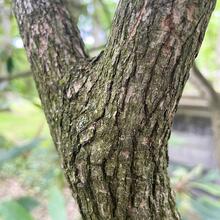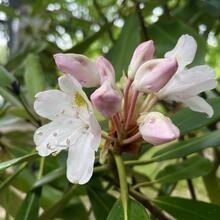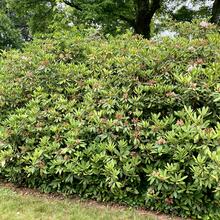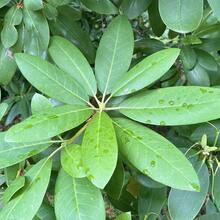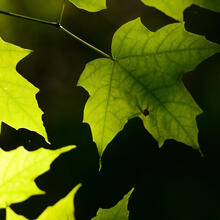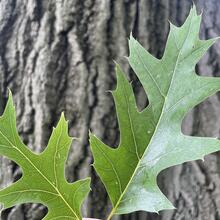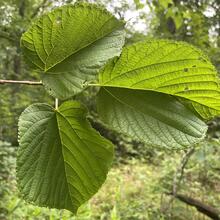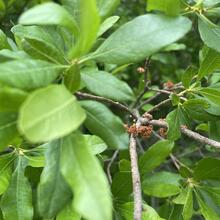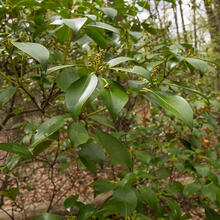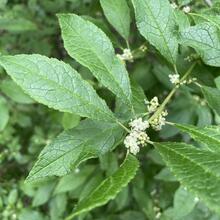Rhododendron periclymenoides
Ericaceae
Multi-branched shrub with large showy white or pink flowers. Prefers fertile soil, but tolerates nutrient poor sites. Generally more pest/disease resistant than most hybrid Azaleas. Frequently damaged by deer browse.
Summary
 Climate Tolerance
Climate Tolerance
NA
Wildlife Benefits
Nectar/pollen source for bees, butterflies, hummingbirds
Pollination Type
Pollinator
Plant Hardiness Zones
4 to 9
# Butterfly/Moths that use as host
Unknown
Bloom Time
Spring (Mar-May)
 Shade/Sun Tolerance
Shade/Sun Tolerance
Part Shade: Receives 2-4 hours of direct sunlight, preferably in the morning
 Maximum Height
Maximum Height
Tall Shrub (5-15 ft)
 Growth Rate
Growth Rate
Moderate: 1 ft- 2 ft per year
 Soil Type
Soil Type
Loam: Equal mix of clay, sand, and silt. Moderate moisture retention and high nutrient availability.
Sand: Large/coarse particles. Short moisture retention and low nutrient availability.
Silt: Medium sized particles. Moderate moisture retention and high nutrient availability.
 Soil Moisture Tolerance
Soil Moisture Tolerance
Wet: Soil can be saturated and has the ability to retain standing water for periods of time
Root - Fungal Association
Ericoid:
Pest & Pathogen Risks
Low; Azalea lace bug
 Urban Stress Tolerance
Urban Stress Tolerance
Low: Tree will not grow well in the urban environment
Drought Tolerance
Tolerant: Tree will not become stressed during periods of drought
Coefficient of Conservatism
7
Native Status
OH-Native: Species is native to Ohio
Plant Community Type
- Beech Mixed: Absent
- Oak Mixed: Absent
- Alluvial: Absent
- Red Maple Mixed: Absent
- Ruderal: Absent
Bloom Color
White
Pink
Form
Shrub
 Lifespan
Lifespan
Medium: 100-250 years
Soil pH
Acidic (pH<6.8)
Wetland Indicator Status
FAC: Facultative, occurs in wetlands and non-wetlands
Soil Compaction Tolerance
Sensitive: Tree will become stressed from soil being compacted
Heat Tolerance
Tolerant: Tree will not become stressed for increased temperature due to urban heat island effects
Salt Tolerant
Sensitive: Intolerant to either aerial salt spray and/or salt present in soil
Native County Status
Geauga
Lake
Portage
